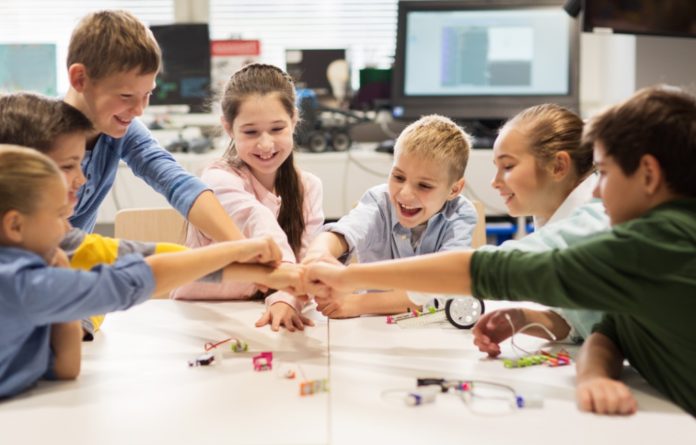Why is collaboration a 21st century skill and how can students be taught to work in teams?
Team TLT
Do you remember the time you were asked to do projects as a group either at school or at home? Did you enjoy the experience? Do your students enjoy them now? Do they find it hard to work in teams? Do they charge other students with not pulling their weight while just one or two students do the work?
Collaboration has always been important to a person’s and organisation’s growth and development
but is considered a 21st century skill because today’s world is so much more involved and hyper-connected. Many projects are global in nature and more complex than ever so the ability to work as a team has also acquired more importance. Exchanging knowledge and contributing to a team that can leverage the power of diverse ideas and points of view to achieve a shared goal is vital.
Collaboration can help us be empathetic, get us to think from new perspectives, make friends and become more open-minded. It is the ability to combine various thoughts and beliefs into one solid explanation or solution. We have all heard that two heads are better than one.
Collaboration requires open-mindedness, a willingness to listen to others’ point of view. Team members and leaders have to decide how best to manage and complete the task at hand. They have to agree on and assign roles, decide on negotiation and conflict-resolution protocols. They have to contribute resources, ideas, efforts and offer mutual support. Each member has to reflect and adapt to individual and group processes.
Collaborating with somebody can be in the best interests of the individual and the group. Being honest about strengths and weaknesses can have one asking for help when needed and help others when needed. Second, problem- solving can be more efficient and effective when talent, experience, finances and infrastructure are combined. People can learn how to work with others despite differences. They can become lifelong learners which leads to personal growth as well as that of the organisation in which one works.
It is thus necessary to teach students how to collaborate from a young age. It is important to note that assessments are moving towards rating collaborative skills. The National Education Policy 2020 says all students should have certain skills, subjects and capacities to become good, successful, innovative, adaptable and productive human beings – and collaboration and teamwork are a couple of these skills. It adds that the qualities for a head of institution include collaboration and teamwork. The PISA test (Programme for International Student Assessment) contains an interactive task that judges how well students can develop a shared understanding of a problem, take action together to solve it and maintain their team structure and work.
How, then, can children be taught to collaborate? It can start right at home, even before they begin going to school. They can be taught the skill through easy household chores such as tidying and picking up their toys. Encouraging the child to share their toys with their siblings or other children is an early lesson in collaboration, for example. At school, experts recommend that the group assignment will become naturally collaborative if it has a certain level of complexity. Students will be forced to collaborate rather than take it easy or do it alone. Teachers should also help students understand the benefits of collaboration and get them to understand what successful collaboration can look like. Students should be guided to build teams, and given time and opportunities to develop leadership, decision-making, trust- building, communication and conflict management skills.
Teachers can establish expectations and standards for teamwork, and give instructions on how to sort out disagreements. It is important to ensure that every child contributes to the project. Small teams can ensure there is no ‘free riding’ – taking credit from the efforts of others – as the task will not be done without everyone pitching in. Each child can be assigned a specific responsibility. On the other hand, teachers can ensure individual and group accountability by assessing students with a test or an activity periodically based on the project. This activity should be able to tell the teacher and team members if they are listening to and understanding each other and getting along.
The goal of these projects can be the teamwork as much as the project’s success itself. Teachers can get the students to discuss and work on a consensus. They should ensure no one is left out or undermined. Students should learn from the other team members, not just focus on their own skills.
Collaboration is not always fail-proof but here too, introspection and analysis can help understand where the effort went wrong and how it can be set right or how the mistakes are not repeated in the future.







